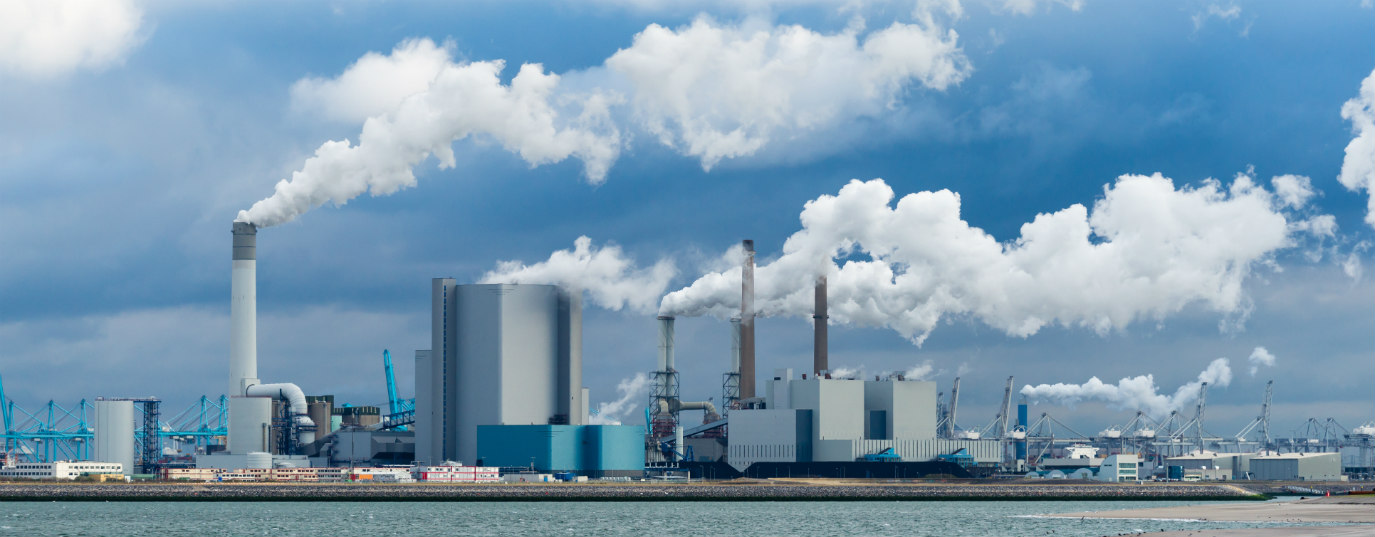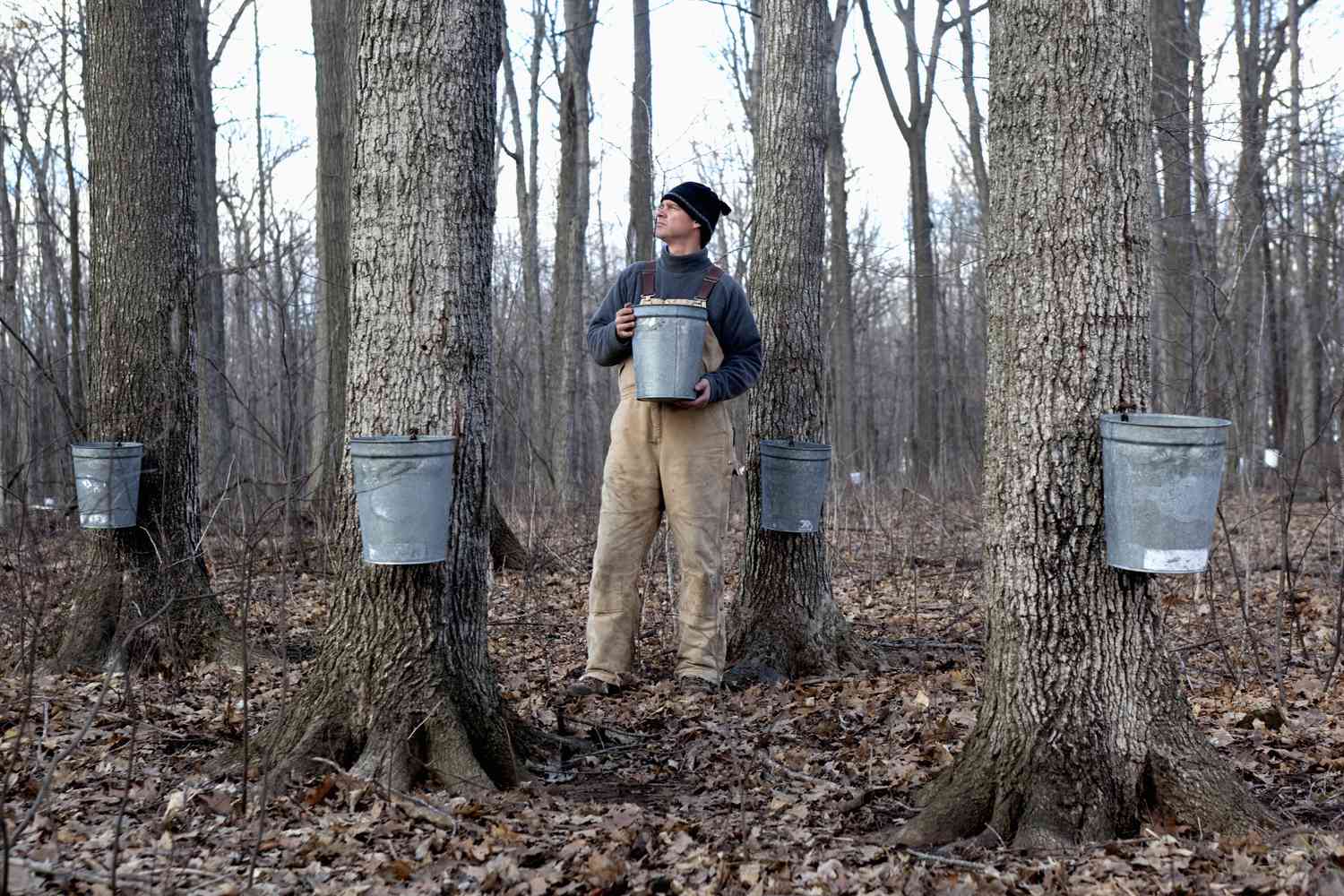Home>Gardening News and Trends>What Produces Greenhouse Gases


Gardening News and Trends
What Produces Greenhouse Gases
Modified: January 22, 2024
Stay updated with the latest news on what produces greenhouse gases and learn how they affect our environment.
(Many of the links in this article redirect to a specific reviewed product. Your purchase of these products through affiliate links helps to generate commission for Chicagolandgardening.com, at no extra cost. Learn more)
Table of Contents
- Introduction
- Definition of Greenhouse Gases
- Sources of Greenhouse Gases
- Carbon Dioxide Emissions
- Methane Emissions
- Nitrous Oxide Emissions
- Fluorinated Gas Emissions
- Natural and Human Activities that Contribute to Greenhouse Gas Emissions
- Impact of Greenhouse Gases on Climate Change
- Ways to Reduce Greenhouse Gas Emissions
- Conclusion
Introduction
The issue of greenhouse gases and their impact on the environment has become a pressing concern in recent years. As the global population continues to grow and industrialization expands, our planet faces the challenge of rising temperatures and climate change. Greenhouse gases play a significant role in this process, as they trap heat in the Earth’s atmosphere and contribute to the greenhouse effect.
Greenhouse gases are a vital part of the Earth’s natural climate system, as they help to keep the planet warm enough to sustain life. However, human activities have exacerbated the levels of these gases in the atmosphere, leading to a disruption in the delicate balance of our environment. It is crucial to understand the sources and impact of greenhouse gases in order to mitigate their effects and work towards a more sustainable future.
In this article, we will explore the definition of greenhouse gases and their sources, focusing on the four main types: carbon dioxide (CO2), methane (CH4), nitrous oxide (N2O), and fluorinated gases. We will examine both natural and human activities that contribute to the emissions of these gases and discuss the implications for climate change. Finally, we will look at potential strategies to reduce greenhouse gas emissions and mitigate the effects of global warming.
By gaining a deeper understanding of greenhouse gases and their impact on the environment, we can take informed actions to safeguard our planet for future generations. It is essential for individuals, communities, businesses, and governments to work together to reduce greenhouse gas emissions and transition to a more sustainable and environmentally friendly future. Let us delve into the world of greenhouse gases and explore the actions we can take to combat climate change.
Definition of Greenhouse Gases
Greenhouse gases are gases that trap heat in the Earth’s atmosphere, contributing to the greenhouse effect. They are essential for maintaining the Earth’s temperature and making our planet habitable. The most common greenhouse gases include carbon dioxide (CO2), methane (CH4), nitrous oxide (N2O), and fluorinated gases.
Carbon dioxide (CO2) is the primary greenhouse gas emitted by human activities, such as the burning of fossil fuels like coal, oil, and natural gas. It is also released through deforestation and land-use changes. Methane (CH4) is produced by natural processes, such as the decay of organic matter in wetlands, as well as human activities like agriculture, livestock farming, and the extraction and transport of fossil fuels. Nitrous oxide (N2O) is mainly emitted through agricultural and industrial activities and is also released naturally from oceans and soils. Fluorinated gases, including hydrofluorocarbons (HFCs) and perfluorocarbons (PFCs), are synthetic gases used in various industrial applications, such as refrigeration, air conditioning, and electronics manufacturing.
These greenhouse gases function by trapping infrared radiation from the Earth’s surface and preventing it from escaping into space. They form a layer in the atmosphere that acts like a blanket, allowing sunlight to reach the Earth’s surface while trapping heat and preventing it from dissipating freely. This process is known as the greenhouse effect.
The greenhouse effect is a natural phenomenon that is vital for maintaining the Earth’s temperature within a habitable range. Without greenhouse gases, the Earth would be much colder, making it impossible for life as we know it to exist. However, the increased concentrations of greenhouse gases in the atmosphere due to human activities have intensified the greenhouse effect, leading to global warming and climate change.
Understanding the definition of greenhouse gases is crucial to comprehend their impact on climate change. By recognizing their role in the Earth’s climate system, we can take steps to reduce their emissions and mitigate the effects of global warming. Let’s delve into the sources of these greenhouse gases and explore the activities that contribute to their release into the atmosphere.
Sources of Greenhouse Gases
Greenhouse gases are emitted into the atmosphere from various natural and human activities. Understanding these sources is crucial in devising effective strategies to reduce their emissions and combat climate change.
The primary source of greenhouse gas emissions is the burning of fossil fuels. When coal, oil, and natural gas are used for energy production, carbon dioxide (CO2) is released into the atmosphere. This includes emissions from power plants, transportation, and industrial processes. Deforestation and land-use changes also contribute to CO2 emissions, as trees absorb CO2 and release it back into the atmosphere when they are cut down or burned.
Methane (CH4) emissions come from both natural and human activities. Natural sources include wetlands, where decaying plant matter produces methane. Human activities that contribute to methane emissions include livestock farming, especially from enteric fermentation in ruminant animals, such as cows and sheep. Other sources include rice cultivation, landfills, and the extraction and transport of fossil fuels.
Nitrous oxide (N2O) emissions result from agricultural practices and industrial activities. Agricultural sources include the use of synthetic fertilizers, which release nitrous oxide into the atmosphere. Additionally, the management of animal waste and the burning of crop residues also contribute to N2O emissions. Industrial activities, such as combustion processes and the production and use of nitrogen-based chemicals, are also significant sources of N2O emissions.
Fluorinated gases (HFCs and PFCs) are synthetic gases used in a variety of industrial applications. These gases are potent greenhouse gases with high global warming potential. They are mainly used in refrigeration, air conditioning, and electronics manufacturing. While their contributions to total greenhouse gas emissions are relatively small compared to CO2, methane, and nitrous oxide, they have a disproportionately high impact on climate change due to their high potency and long atmospheric lifetimes.
It’s important to note that greenhouse gas emissions are not evenly distributed across the globe. Developed countries, with their higher levels of industrialization and energy consumption, tend to have higher emissions. However, emerging economies are also experiencing significant increases in their emissions as they undergo rapid industrial development.
By identifying the sources of greenhouse gas emissions, we can focus our efforts on reducing and mitigating these emissions. In the next sections, we will delve deeper into the specific activities and natural processes that contribute to the release of greenhouse gases, with the aim of developing effective strategies to combat climate change.
Carbon Dioxide Emissions
Carbon dioxide (CO2) is the most prevalent greenhouse gas emitted by human activities, accounting for approximately 80% of total greenhouse gas emissions. The burning of fossil fuels, such as coal, oil, and natural gas, is the primary source of CO2 emissions. When these fuels are combusted for electricity generation, transportation, and industrial processes, carbon is released into the atmosphere as CO2.
The energy sector is a major contributor to CO2 emissions. Power plants that burn fossil fuels, including coal-fired power plants, are a significant source of CO2. Additionally, the transportation sector, which heavily relies on gasoline and diesel fuels, is a major contributor to CO2 emissions. Industrial processes, such as cement production and chemical manufacturing, also release large amounts of CO2 into the atmosphere.
Deforestation and land-use changes also contribute to CO2 emissions. When forests are cleared for agriculture, urban development, or logging, the carbon stored in trees and vegetation is released into the atmosphere. This process is known as “carbon loss” and significantly contributes to the increase in CO2 levels.
Reducing carbon dioxide emissions is crucial in mitigating the effects of climate change. Transitioning to cleaner and more sustainable energy sources is one effective way to curb CO2 emissions. This includes investing in renewable energy, such as solar and wind power, and supporting the development of new technologies that can capture and store CO2 emissions from fossil fuel combustion.
Furthermore, reforestation and afforestation efforts can help absorb CO2 from the atmosphere and store it in trees and vegetation. Protecting and preserving existing forests is also essential in limiting carbon loss and maintaining carbon sinks.
Individuals can contribute to reducing CO2 emissions through lifestyle changes. This includes reducing energy consumption, such as using energy-efficient appliances, practicing energy conservation in daily activities, and opting for public transportation or carpooling. Supporting businesses and organizations that prioritize sustainability and advocating for government policies and regulations that incentivize carbon reduction efforts are also impactful ways to address CO2 emissions.
It is necessary for governments, industries, and individuals to work together to reduce carbon dioxide emissions. Collaborative efforts and a commitment to sustainable practices are vital in mitigating climate change and ensuring a better future for generations to come.
Methane Emissions
Methane (CH4) is a potent greenhouse gas that is responsible for approximately 16% of total global greenhouse gas emissions. It is roughly 28 times more effective at trapping heat in the atmosphere than carbon dioxide over a 100-year period. Methane emissions come from a variety of natural and human activities.
Natural sources of methane include wetlands, where the breakdown of organic matter under anaerobic conditions releases methane into the atmosphere. Methane is also emitted by termites during the digestion process and by wildfires. However, human activities significantly contribute to the increase in methane emissions.
One of the major sources of anthropogenic methane emissions is agriculture, particularly livestock farming. Ruminant animals, such as cows, sheep, and goats, have specialized stomachs that allow them to digest plant material through a process known as enteric fermentation. This fermentation process releases methane as a byproduct. The increasing demand for meat and dairy products has led to a rise in livestock populations, resulting in higher methane emissions.
Another significant source of methane emissions is the production, transport, and use of fossil fuels. Methane can escape during the extraction and processing of natural gas, coal mining, and oil production. As natural gas becomes a more important energy source, the potential for methane leaks increases, contributing to methane emissions.
Landfills also release methane as organic waste decomposes under anaerobic conditions. Methane is a byproduct of this decomposition process, and if not properly managed, it is released into the atmosphere. To mitigate these emissions, landfill operators can implement strategies such as capturing and utilizing the methane as an energy source.
Reducing methane emissions is crucial in addressing climate change. Implementing improved livestock management practices, such as dietary additives and feed modifications, can help reduce methane emissions from enteric fermentation. Methane capture systems in landfills can also help prevent the release of methane into the atmosphere.
Additionally, transitioning to renewable energy sources and increasing energy efficiency can reduce our dependency on fossil fuels, which contributes to methane emissions. Implementing regulations and policies to monitor and control methane emissions from various industries, including the oil and gas sector, can also have a significant impact on reducing methane emissions.
By understanding the sources and impact of methane emissions, we can take action to reduce them and mitigate the effects of climate change. Through a combination of technological advancements, policy changes, and individual efforts, we can work towards a more sustainable future.
Nitrous Oxide Emissions
Nitrous oxide (N2O) is a potent greenhouse gas that contributes to approximately 6% of total global greenhouse gas emissions. It is about 265 times more effective at trapping heat in the atmosphere than carbon dioxide over a 100-year period. Nitrous oxide emissions come from both natural processes and human activities.
Natural sources of nitrous oxide include the oceans, where it is produced by the microbial breakdown of nitrogen-based compounds. It is also released naturally from soils through bacterial processes. However, human activities have significantly increased the levels of nitrous oxide in the atmosphere.
Agricultural practices, particularly the use of synthetic fertilizers, are major contributors to nitrous oxide emissions. When fertilizers are applied to crops, excess nitrogen is released into the soil. Microbes then convert this nitrogen into nitrous oxide through the process of nitrification and denitrification. Livestock farming, particularly the management of animal waste and the application of manure to agricultural fields, also contributes to nitrous oxide emissions.
Industrial activities, such as the production and use of nitrogen-based chemicals, including nitrogen fertilizers and nitric acid, release nitrous oxide into the atmosphere. Industrial combustion processes, such as those used in power plants and industrial boilers, can also emit nitrous oxide when nitrogen in the air combines with oxygen at high temperatures.
Reducing nitrous oxide emissions is essential in mitigating climate change. Implementing sustainable agricultural practices, such as precision farming techniques and efficient use of fertilizers, can help minimize nitrogen losses and mitigate nitrous oxide emissions. Additionally, alternative and organic fertilizers, such as compost and manure, can be used instead of synthetic fertilizers to reduce the release of nitrous oxide.
Improving manure management in livestock farming can also help reduce nitrous oxide emissions. Strategies such as anaerobic digestion and composting can capture and utilize methane emissions from manure, reducing its environmental impact.
Other measures to decrease nitrous oxide emissions include promoting efficient energy use and adopting technologies that reduce nitrous oxide emissions from industrial processes. Internationally, efforts are being made to regulate and control nitrous oxide emissions through agreements like the Paris Agreement, which aims to limit global warming to well below 2 degrees Celsius above pre-industrial levels.
By understanding the sources and impact of nitrous oxide emissions, we can take action to reduce them and contribute to a more sustainable future. Through a combination of agricultural best practices, industrial improvements, and global cooperation, we can work towards mitigating climate change and preserving the health of our planet.
Fluorinated Gas Emissions
Fluorinated gases, such as hydrofluorocarbons (HFCs) and perfluorocarbons (PFCs), are synthetic gases that have a high global warming potential. Although they make up a relatively small percentage of total greenhouse gas emissions, they have a disproportionate impact on climate change due to their high potency and long atmospheric lifetimes.
HFCs are commonly used as substitutes for chlorofluorocarbons (CFCs) and hydrochlorofluorocarbons (HCFCs) in various industrial applications, including refrigeration and air conditioning systems. PFCs, on the other hand, are mainly used in electronics manufacturing, as well as in the production of semiconductors and certain industrial processes.
The emissions of fluorinated gases result from various activities, including the leakage and improper disposal of equipment containing HFCs, such as refrigerators and air conditioners. These leaks can occur during manufacturing, transportation, installation, usage, and disposal. Additionally, the release of HFCs during the servicing and maintenance of equipment also contributes to their emissions.
As for PFC emissions, they primarily occur during the production and use of these gases in industrial processes. Manufacturing industries, such as aluminum production and semiconductor manufacturing, are significant sources of PFC emissions. PFCs are also released during the incineration of waste materials containing these gases or during their disposal in landfills.
To address and reduce the emissions of fluorinated gases, international agreements and regulations have been put in place. The Kigali Amendment to the Montreal Protocol, for instance, aims to phase down the production and consumption of HFCs. The amendment seeks to mitigate the environmental impact of these gases by encouraging the development and use of environmentally friendly alternatives.
The transition to low-global-warming-potential alternatives, such as natural refrigerants, is an effective strategy for reducing HFC emissions. Advancements in technology and the implementation of energy efficiency measures in refrigeration and air conditioning systems can also help minimize the need for these gases.
Furthermore, proper management and disposal of equipment containing HFCs, as well as the responsible handling of PFCs in industrial processes, can help reduce emissions. Improved recycling and recovery practices, along with the development and adoption of safe destruction technologies, can contribute to the reduction of these gases in the atmosphere.
The control of fluorinated gas emissions requires a collaborative effort between governments, industries, and consumers. By supporting and enforcing international agreements, adopting sustainable technologies and practices, and raising awareness about the environmental impact of these gases, we can work towards reducing their emissions and preserving the health of our planet.
Natural and Human Activities that Contribute to Greenhouse Gas Emissions
Greenhouse gas emissions come from a combination of natural processes and human activities. Understanding both sources is essential in addressing climate change and developing effective mitigation strategies.
Natural sources of greenhouse gas emissions include processes that occur in the environment without direct human intervention. For instance, carbon dioxide (CO2) is naturally released through volcanic eruptions and the decay of organic matter in forests and wetlands. Methane (CH4) is generated by the breakdown of organic matter in wetlands, the digestive processes of certain animals, and wildfires. Nitrous oxide (N2O) is emitted during microbial processes in soils and the oceans.
Human activities significantly contribute to the increase in greenhouse gas emissions. The burning of fossil fuels for energy production is a major source of CO2 emissions. This includes the use of coal, oil, and natural gas for electricity generation, transportation, and industrial processes. Deforestation and land-use changes also release large amounts of CO2 into the atmosphere, as trees absorb CO2 and release it when they are cut down or burned.
The agricultural sector is a considerable contributor to greenhouse gas emissions. Livestock farming, particularly the digestion process of ruminant animals like cows and sheep, produces significant amounts of methane. In addition, the use of synthetic fertilizers in agriculture contributes to nitrous oxide emissions. Methane and nitrous oxide are also emitted from the management of animal waste, such as from livestock operations and manure storage.
Industrial processes, including manufacturing, chemical production, and combustion in power plants, contribute to greenhouse gas emissions. These activities release CO2, methane, and nitrous oxide into the atmosphere either directly or as byproducts. Additionally, certain industrial processes, such as the production and use of fluorinated gases like hydrofluorocarbons (HFCs) and perfluorocarbons (PFCs), also contribute to emissions.
Addressing the sources of greenhouse gas emissions requires a multi-pronged approach. It involves transitioning to cleaner and more sustainable energy sources, such as renewable energy, and promoting energy efficiency in all sectors. Implementing agricultural practices that reduce methane and nitrous oxide emissions, such as improved livestock management and responsible fertilizer application, is also crucial.
Furthermore, sustainable waste management practices, such as reducing landfill use and promoting recycling and composting, can help control emissions. Industrial processes can adopt cleaner technologies and practices to minimize greenhouse gas emissions. Additionally, raising awareness about individual consumption patterns and promoting behavior changes, such as reducing energy use and supporting sustainable transportation options, can contribute to emission reduction efforts.
By recognizing the natural and human activities that contribute to greenhouse gas emissions, we can take collective action to reduce our impact on the environment. It is essential for governments, industries, communities, and individuals to work together to mitigate climate change and create a sustainable future for generations to come.
Impact of Greenhouse Gases on Climate Change
Greenhouse gases play a significant role in the Earth’s climate system and have a profound impact on climate change. These gases, including carbon dioxide (CO2), methane (CH4), nitrous oxide (N2O), and fluorinated gases, trap heat in the Earth’s atmosphere and contribute to the greenhouse effect.
The greenhouse effect is a natural process that helps regulate the Earth’s temperature by trapping heat from the sun. Without greenhouse gases, the Earth would be much colder and unsuitable for life as we know it. However, human activities have significantly increased the concentrations of these gases in the atmosphere, leading to a disruption in the balance of the climate system.
The primary greenhouse gas contributing to climate change is carbon dioxide. The burning of fossil fuels, deforestation, and land-use changes have led to a significant increase in CO2 levels. As a result, more heat is being trapped in the atmosphere, causing global temperatures to rise.
Methane is another potent greenhouse gas that contributes to climate change. It has a shorter lifespan in the atmosphere compared to CO2, but its warming potential is much higher. Methane emissions from agricultural activities, such as livestock farming and rice cultivation, as well as from the extraction and transport of fossil fuels, amplify the greenhouse effect and contribute to rising temperatures.
Nitrous oxide, while present in lower concentrations than CO2 and methane, has a long lifespan and contributes to both the greenhouse effect and the destruction of the ozone layer. Nitrous oxide emissions from agricultural practices, industrial activities, and combustion processes intensify the warming of the planet.
Fluorinated gases, although not as abundant as CO2 and methane, are extremely potent and have a high global warming potential. As a result, their emissions have a significant impact on climate change. These gases, mainly used in industrial applications, persist in the atmosphere for a long time, contributing to the greenhouse effect.
The consequences of climate change are far-reaching and include rising global temperatures, more frequent and severe extreme weather events, melting ice caps and glaciers, rising sea levels, disruptions to ecosystems and biodiversity, and threats to human health and well-being. These impacts have direct and indirect implications on agriculture, water resources, coastal areas, and vulnerable communities.
To mitigate the effects of climate change, it is crucial to reduce greenhouse gas emissions. This can be achieved through a combination of transitioning to renewable and cleaner energy sources, implementing sustainable agricultural practices, promoting energy efficiency, and adopting greener technologies. Additionally, protecting and restoring natural ecosystems, such as forests and wetlands, can help absorb and store greenhouse gases, mitigating their impact on the climate.
By understanding the impact of greenhouse gases on climate change, we can strive towards sustainable solutions and take proactive measures to preserve our planet for future generations. It is our collective responsibility to address the challenges posed by climate change and work towards a more resilient and sustainable future.
Ways to Reduce Greenhouse Gas Emissions
Reducing greenhouse gas emissions is crucial in mitigating the effects of climate change and creating a more sustainable future. The collective effort of individuals, communities, businesses, and governments is essential in implementing effective strategies and practices. Here are several ways to reduce greenhouse gas emissions:
- Transition to renewable energy sources: One of the most effective ways to reduce greenhouse gas emissions is to shift from fossil fuels to renewable energy sources such as solar, wind, and hydroelectric power. Investing in renewable energy infrastructure and supporting policies that promote their adoption can significantly reduce carbon dioxide emissions from the energy sector.
- Improve energy efficiency: Energy efficiency measures can help reduce greenhouse gas emissions by minimizing energy waste. This includes using energy-efficient appliances, insulating buildings, adopting efficient lighting systems, and promoting smart energy management practices.
- Promote sustainable transportation: The transportation sector is a major contributor to greenhouse gas emissions. Transitioning to electric vehicles, promoting public transportation, encouraging cycling and walking, and optimizing logistic systems can help reduce carbon emissions from transportation.
- Adopt sustainable agricultural practices: Implementing sustainable agriculture techniques, such as precision farming, organic farming, and agroforestry, can help reduce greenhouse gas emissions from the agricultural sector. This can include optimizing fertilizer use, improving irrigation practices, and reducing methane emissions from livestock management.
- Reduce deforestation and promote reforestation: Deforestation contributes to carbon dioxide emissions as trees release stored carbon when they are cut down or burned. Protecting existing forests and promoting reforestation and afforestation efforts can help sequester carbon dioxide and mitigate the impact of greenhouse gas emissions.
- Improve waste management: Proper waste management practices, such as recycling, composting, and reducing landfill use, can help reduce methane emissions from decomposing organic waste. Additionally, advanced technologies for waste treatment, such as anaerobic digestion, can capture methane for energy production.
- Implement carbon capture and storage: Carbon capture and storage (CCS) technologies capture carbon dioxide emissions from power plants and industrial processes, preventing them from being released into the atmosphere. The captured CO2 is then stored underground or utilized in various industrial applications.
- Promote sustainable consumer choices: Encouraging consumers to make environmentally conscious choices, such as buying energy-efficient products, reducing food waste, and supporting sustainable businesses, can contribute to greenhouse gas reduction efforts. Education and awareness campaigns can play a key role in encouraging these behaviors.
These are just a few examples of the many ways to reduce greenhouse gas emissions. It is crucial for individuals, communities, businesses, and governments to collaborate and take proactive measures to transition to a low-carbon economy and mitigate the impacts of climate change. By collectively working towards sustainable practices, we can create a better and more resilient future for generations to come.
Conclusion
Addressing greenhouse gas emissions and mitigating the effects of climate change is an urgent global priority. It requires a collective effort from individuals, communities, businesses, and governments to transition to a more sustainable and environmentally friendly future. Through understanding the sources and impact of greenhouse gases, we can work towards reducing emissions and preserving the health of our planet.
Greenhouse gases, such as carbon dioxide (CO2), methane (CH4), nitrous oxide (N2O), and fluorinated gases, are primarily emitted through human activities, including the burning of fossil fuels, deforestation, industrial processes, and agricultural practices. These gases trap heat in the atmosphere, contributing to the greenhouse effect and causing global temperature rise.
The consequences of climate change are far-reaching and affect various aspects of our environment and society. Rising global temperatures, severe weather events, melting ice caps, rising sea levels, and biodiversity loss are just a few of the impacts we face. However, there are strategies and practices that can help reduce greenhouse gas emissions and mitigate these effects.
Transitioning to renewable energy sources, improving energy efficiency, promoting sustainable transportation, adopting sustainable agricultural practices, reducing deforestation, implementing proper waste management, and exploring carbon capture and storage technologies are all crucial steps in reducing greenhouse gas emissions.
It is important for individuals to make sustainable choices in their daily lives, support businesses that prioritize environmental sustainability, and advocate for policies and regulations that incentivize emissions reduction. Collaboration between governments, industries, and communities is necessary to achieve meaningful change on a global scale.
By taking action to reduce greenhouse gas emissions, we can protect the health of our planet and ensure a sustainable future for generations to come. Each small step towards mitigating climate change counts, and it is our collective responsibility to prioritize environmental stewardship and preserve the beauty and biodiversity of our world.






